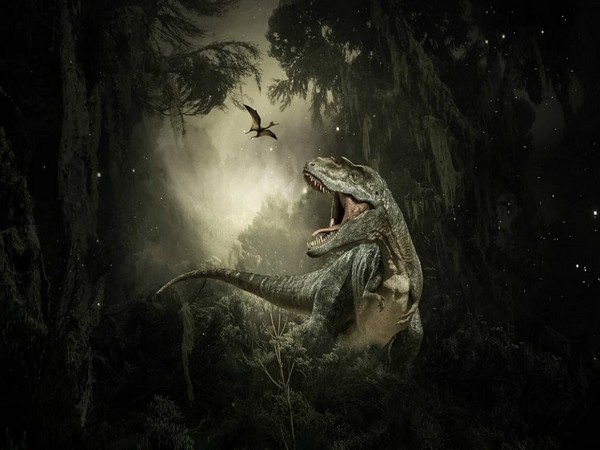Science News Roundup: Eye socket changes amped up bite force in T. rex and friends; Remains of small armor-plated dinosaur unearthed in Argentina and more
rex and other large predatory dinosaurs by an intriguing evolutionary modification in the skull, with the eye socket - called the orbital bone - becoming elliptical or keyhole-shaped rather than circular, according to a study published on Thursday. Satellite imagery shows Antarctic ice shelf crumbling faster than thought Antarctica's coastal glaciers are shedding icebergs more rapidly than nature can replenish the crumbling ice, doubling previous estimates of losses from the world's largest ice sheet over the past 25 years, a satellite analysis showed on Wednesday.

Following is a summary of current science news briefs.
Eye socket changes amped up bite force in T. rex and friends
Tyrannosaurus rex possessed awe-inspiring bite force, with the huge meat-eating dinosaur's bone-crunching chomp estimated to pack about 8,000 pounds (3,630 kg) of might - about equal to the weight of three small cars. This bite strength was aided in T. rex and other large predatory dinosaurs by an intriguing evolutionary modification in the skull, with the eye socket - called the orbital bone - becoming elliptical or keyhole-shaped rather than circular, according to a study published on Thursday.
Remains of small armor-plated dinosaur unearthed in Argentina
Paleontologists on Thursday heralded the discovery of a previously unknown small armored dinosaur in southern Argentina, a creature that likely walked upright on its back legs roaming a then-steamy landscape about 100 million years ago. The Cretaceous Period dinosaur, named Jakapil kaniukura, would have been well-protected with rows of bony disk-shaped armor along its neck and back and down to its tail, they said. It measured about 5 feet (1.5 meters) long and weighed only 9 to 15 pounds (4-7 kg), similar to an average house cat.
Satellite imagery shows Antarctic ice shelf crumbling faster than thought
Antarctica's coastal glaciers are shedding icebergs more rapidly than nature can replenish the crumbling ice, doubling previous estimates of losses from the world's largest ice sheet over the past 25 years, a satellite analysis showed on Wednesday. The first-of-its-kind study, led by researchers at NASA's Jet Propulsion Laboratory (JPL) near Los Angeles and published in the journal Nature, raises new concerns about how fast climate change is weakening Antarctica's floating ice shelves and accelerating the rise of global sea levels.
Climate risks dwarf Europe's energy crisis, space chief warns
The head of the European Space Agency (ESA) has warned economic damage from heatwaves and drought could dwarf Europe's energy crisis as he called for urgent action to tackle climate change. Director General Josef Aschbacher told Reuter's successive heatwaves along with wildfires, shrinking rivers, and rising land temperatures as measured from space left no doubt about the toll on agriculture and other industries from climate change.
Pivotal evolutionary change helped pave the way for human speech
Scientists have identified evolutionary modifications in the voice box distinguishing people from other primates that may underpin a capability indispensable to humankind - speaking. Researchers said on Thursday an examination of the voice box, known as the larynx, in 43 species of primates showed that humans differ from apes and monkeys in lacking an anatomical structure called a vocal membrane - small, ribbon-like extensions of the vocal cords.
(With inputs from agencies.)
ALSO READ
"One thing on which all partners agree is...": Jaishankar on India-Middle East-Europe Economic Corridor
Europe's STOXX nears six-week low amid geopolitical jitters; Ericsson shines
Trends organises symposium on Gulf-European relations in Paris
Europe's STOXX 600 slides in broader market decline on geopolitical jitters
Polish PM, president at odds over European Sky Shield Initiative










